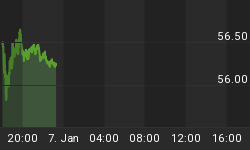Cant' fight the Fed? Bond vigilantes are fighting the Fed and winning at bidding up bond yields. Short of another shock-&-awe policy announcement this Wednesday, the FOMC decision is likely to generate fresh dollar strength against risk currencies (non-JPY).
The FOMC announcement is not expected to generate the fireworks from the March 18 meeting of buying long term Treasuries. Yet, considering the combination of rising US bond yields testing 5-month highs with $101 billion in new issuance this week, the need for the Fed to rein in long yields could re-emerge. In the event that the FOMC statement makes a discreet reference to improved market economic/dynamics (such as slowing pace of decline, tentative signs of stability), bond yields could easily snap back up. To prevent that, the Fed will have to clearly reiterate that the "economic conditions are likely to warrant exceptionally low levels of the federal funds rate for an extended period".

With the US Treasury estimated to borrow about $3 for each $1 purchased by the Federal Reserve this year in long term paper and agency mortgage securities, supply will continue overwhelming demand, and so will the upward impact on bond yields. And as the US Treasury/Fed grows more sensitive to China's concerns with the repercussions of soaring US debt, stabilizing long term yields becomes more paramount than ever. The FOMC decision to buy up to $300 billion in LT treasuries at the March 18 meeting was a surprise due to the Fed's prevailing rhetoric at the time signalling no immediate need for such purchases. But when we consider the fact that Chinese Premier Wen Jiabao had stated earlier that week the need for the "...United States to honour its words, stay a credible nation and ensure the safety of Chinese assets..." the Fed decision becomes less of a surprise. Those comments had lifted 10 year yields for three consecutive days leading to the FOMC decision.
With the dollar sustaining strength against most major currencies, the Feds priority will remain geared at stabilizing bond yields without worrying about prompting a durable sell-off in the currency. The Fed hopes for well received auctions this week ($40 bln in 2-year notes Monday, $35 bln in 5-year notes, $26 bln in 7-year notes on Wednesday. Then right after the Wednesday decision, the Treasury will announce how much in 10 and 20-year treasuries it intends to raise.
Only to the extent to the that FOMC announcement succeeds in dragging down bond yields will the decision weigh on the US dollar to the benefit of gold. The chart below illustrates that the inverse correlation between the gold and yields had intensified earlier this year as markets began to anticipate the Feds purchases of LT treasuries, which helps gold via a deepening of credit easing and dollar declines. The daily correlation since April 1st was a significant -0.62, compared to a merely -0.27 since January and -0.09 since September.

Considering the upward movement in global bond yields, this weeks US auctions and growing signs of stabilization in some economic data sets, the FOMC will have to pull another shock-&-awe announcement on Wednesday to bring down yields. Anything short of that, the dollar could resume its upward momentum against risk currencies (non-JPY), while gold is likely to be caught up between the negative effects from a rising dollar and the positive impact from a falling stock market. Hence, absence of aggressive Fed action could once again dissipate the inverse gold-treasury relationship (both move higher), especially as stocks set to start their upcoming 2-month down cycle.
P.S. Gold tests the top of the trend line resistance extending from Feb 20. The peak of the line has been reached at 1-month intervals (Feb 20, Mar 20 and Apr 27), looking to test $940 by mid week.















